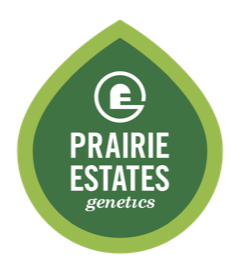This is my final article from Iraq. My 16-month tour is over. I have traveled about 40 percent of my time here, reaching every province but one. I have worked with nearly two dozen USDA ag advisers in the field and several of them here in Baghdad.
Living and working at a U.S. embassy has been a learning experience for me. And Embassy Baghdad is not a typical embassy; it sits in a war zone, is the largest in the world and certainly has and will undergo huge changes in the future.
With the Iraqi elections now several months old and the new government forming, the downsizing of our presence here is underway. The military redeployment of personnel and material is noticeable. In fact, we work with fewer of their assets in terms of a maneuver platoon taking us outside the wire so we can engage our Iraq colleagues. This is particularly challenging in parts of provinces where an entire forward operating base is shut down or combined into a regional base.
Yet we do have workarounds. Our own state department provides logistical support, and we count on them to help us merge these movements with the military.
The word âchangeâ does describe the mission here. Since my assignment began in February 2009, I have seen huge structural changes in how we are able to move about, engage the government of Iraq and accomplish capacity building. I sense that overall the changes are for the better. Our military certainly is looking forward to redeployments back within the continental U.S. Recently while at the largest military base in the Baghdad area, I noticed the civil affairs unit now has only two soldiers left. Three months ago these soldiers numbered 14.
From the onset of my assignment I felt strongly that we, the USDA, should have three fundamental initiatives in Iraq. I felt my job was engaging my colleagues at the ministries here in Baghdad to help them adopt these initiatives for their own well-being after we (the U.S. government) downsize our presence.
I was not successful. For the Ministry of Water Resources and the Ministry of Agriculture, I suggested that we/they should adopt the development of a National Soil Survey. I have written about this effort here before. I spent well over a year talking about it, trying to find an interested Deputy Minister. None was found. Yes, nearly everyone I talked with felt a survey is a good thing, but what they could not understand is that the Iraqi farmers and to some extent the Iraqi public, are beneficiaries of the soil survey. I remember taking my case to the Minister of Water Resources after having visited the large Central Laboratory on the outskirts of Baghdad. He did assign several of his staff to engage me and begin working on this project, but that engagement never got underway.
In the developmental realm, we often must decide at what point we let go of something. In the case of the soil survey, the fact that the Minister of Water Resources did not seek out further engagement with me is clearly the case that I wanted this more than they do.
Here is my point ⌠all of you back at home can easily go to the USDA-NRCS web soil survey on the Internet. You can find many soil chemical, physical and biological attributes about your soils, and they are drawn on georectified maps. We have been mapping soils for decades here in the U.S., and the result of millions of hours of work are right there online. You may not think about it like this, but this survey helps you tremendously with better decision-making on your farm. It is a few mouse clicks away.
The second initiative was the development of a national soil fertility program. The program would include salinity. The Ministry of Agriculture staff showed some interest, but it never went beyond the interest stage. To be fair, the officials did suggest we gather the soil laboratory managers here to Baghdad for a two-day discussion session, paid for by the USDA, but when asked what comes after the meeting, he could not answer. I often state that the No. 1 question from the field is access to a soil laboratory for soil analyses. Unfortunately, here in Iraq, this capacity is sparse to nonexistent.
Here is my point. All farmers in the U.S. have access to several private soil testing laboratories, and generally their land-grant university has one for their use, and certainly for research work. The cost is not a cost at all but an investment. I used to tell our livestock growers, including dairy farmers, that taking an annual soil sample and having a fertility analysis done is an investment, not a cost. It is one of the wisest investments a crop land owner can make. There is not a single location in the entire U.S. where a soil testing laboratory is not available. Couple that with the technical assistance efforts of private agronomists, extension personnel and field scouts, and all this is a phone call away. Not so in Iraq.
The third initiative was adopting an irrigation water management program. This one has been partially accomplished. Given the desert climate and the saline issues, irrigation does drive crop production in the central and southern portions of Iraq, what we call the Mesopotamia Plain. In northern Iraq, more rainfall helps provide moisture to cereal production, although there are many irrigation systems installed there for supplemental water (i.e., pivots that are groundwater-fed).
The Ministry of Agriculture is interested in adopting a formal irrigation water management program, but actually developing the scheduling program with field sensors and trained technicians is another matter. I do think that in the not-to-distant future, the minister will move quite rapidly on this initiative.
Here is my point. Almost all U.S. irrigators have access to fixed weather stations, land-grant university irrigation scheduling programs and the field personnel helping them gather and interpret field data. The effect is a robust management system that landowners can use to optimize the beneficial use of water, thereby increasing crop yield and avoiding runoff or leaching losses. These are a mouse click or phone call away.
I chose to make several points here as my tour ends. These are all bound together in one theme: A country like Iraq simply lacks the contemporary science-based tools and methods we all have at our fingertips in the U.S.
We have, in fact, been working on these in the U.S. for decades. Now they are largely electronic and available in real-time, at little or no cost. Using these tools and methods is paramount to profitable business. They are investments, not costs.
I always enjoy coming home to the U.S. after being somewhere in the world. This time is no exception. And at least in the realm of farming, the next time you open the web soil survey, pull a soil sample or fill out an irrigation scheduling spreadsheet, remember that these are not found everywhere in the world. They are not yet in Iraq, although I like to think that perhaps I helped in a small way plant the seed for their growth someday.
In the next article, I will report to you my next assignment. Goodbye, Iraq. PD

-
Mike Gangwer
- Agricultural Scientist
- USDA-NRCS
- Email Mike Gangwer





